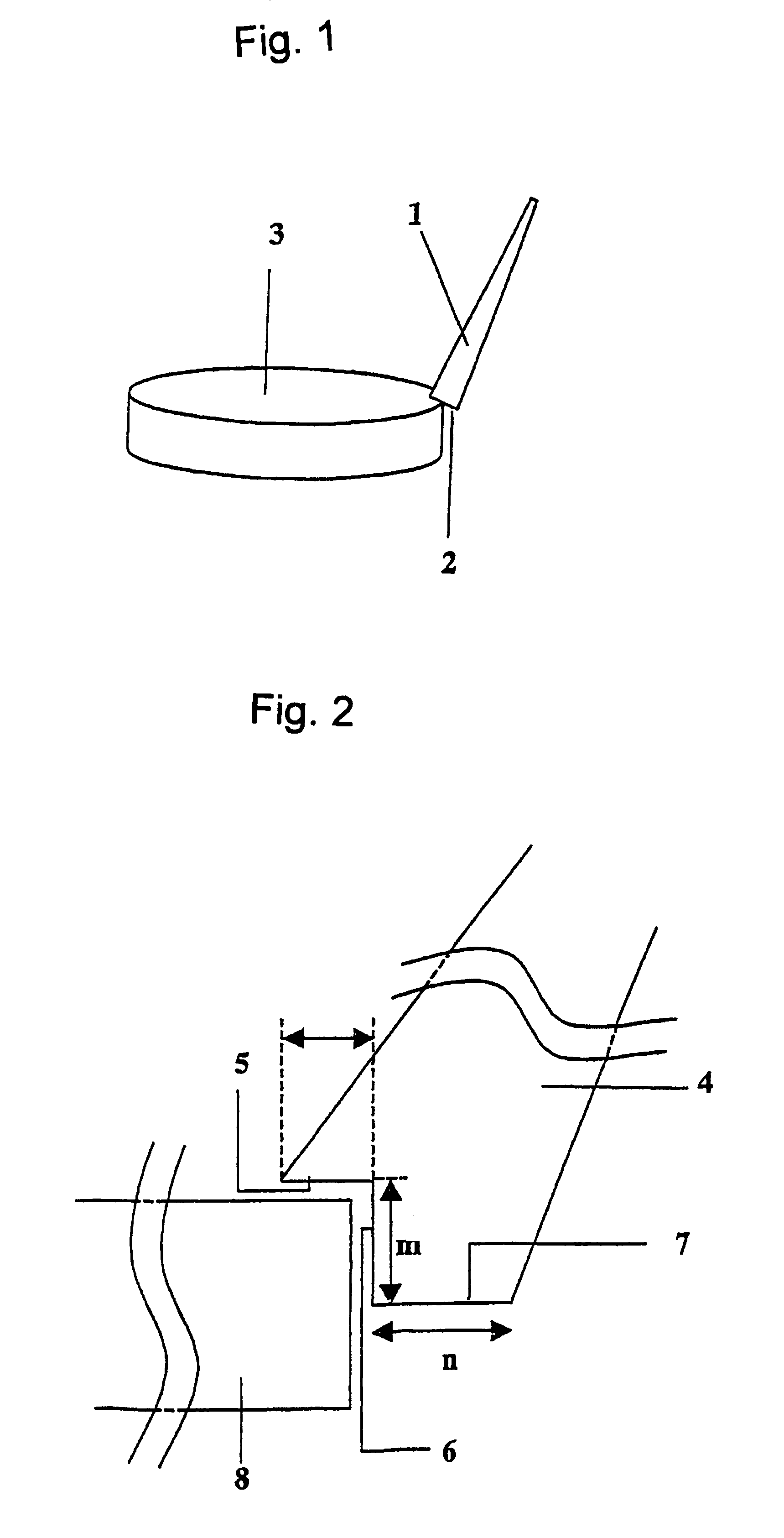Process for producing photochromic layered product
a technology of photochromic layered products and processing methods, which is applied in the direction of synthetic resin layered products, instruments, transportation and packaging, etc., can solve the problems of not being satisfied, and achieve excellent photochromic properties and high surface hardness
- Summary
- Abstract
- Description
- Claims
- Application Information
AI Technical Summary
Benefits of technology
Problems solved by technology
Method used
Image
Examples
example 1
[0338]The above radically polymerizable monomers were blended at a ratio shown in Table 1 to obtain a polymerizable composition.
[0339]To 100 parts by weight of the mixture of the above radically polymerizable monomers, there were added 2.7 parts by weight of the photochromic compound PC1, 1.5 parts by weight of PC2, 0.3 parts by weight of PC3, 0.3 parts by weight of PC4, as well as 0.375 parts by weight of the photopolymerization initiator IN1 and 0.125 parts by weight of IN2. As other additives, there were further added LS765 (5 parts by weight) as a photo-stabilizer and NMDEA (3 parts by weight), and the mixture was mixed to a sufficient degree. The kinematic viscosity of the mixed solution was measured by using a Cannon-Fenske viscometer in compliance with JIS K2283 at 25° C. By using the obtained kinematic viscosity and the specific gravity of the sample that had been measured in advance, the viscosity of the sample was measured according to the following formula,
Viscosity (cP)=...
examples 2 to 6
[0367]Lens samples having a photochromic high molecular weight film were prepared by the same method as the one of Example 1 but blending the polymerizable monomers as shown in Table 1 below and varying the irradiation conditions from those of Example 1 as shown in Table 2. Properties were evaluated as shown in Table 3. The results were as shown in Table 3.
PUM
| Property | Measurement | Unit |
|---|---|---|
| thickness | aaaaa | aaaaa |
| temperature | aaaaa | aaaaa |
| wavelength | aaaaa | aaaaa |
Abstract
Description
Claims
Application Information
 Login to View More
Login to View More - R&D
- Intellectual Property
- Life Sciences
- Materials
- Tech Scout
- Unparalleled Data Quality
- Higher Quality Content
- 60% Fewer Hallucinations
Browse by: Latest US Patents, China's latest patents, Technical Efficacy Thesaurus, Application Domain, Technology Topic, Popular Technical Reports.
© 2025 PatSnap. All rights reserved.Legal|Privacy policy|Modern Slavery Act Transparency Statement|Sitemap|About US| Contact US: help@patsnap.com



